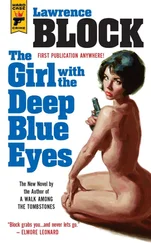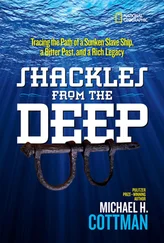But Clayton had allowed Luke in to prep the mice. Luke used the old Wahl clippers his father used on his wiry neck hairs. For the “Vacanti Objective,” there were thirteen mice, all named: Doug and Pepper and Dot and Beanie and Clyde and Percival, et cetera. They squealed and pissed and shit perfect little chocolate-sprinkle-shaped turds as Luke worked the clippers over their squirming bodies.
“Okay, you can go now,” Clay said brusquely after Luke had finished. Not even a thank-you.
That was the last Luke had seen of his brother for days.
At night, the squeaks of those mice traveled through the vents. One morning Luke found one of them in the garbage can, atop the old coffee grounds and eggshells. A weird lump projected from the mouse’s back: it looked like a horn, or a shark’s fin. Luke plucked it from the trash and dug a hole in the garden and buried it.
A few weeks later, Luke was downstairs tossing his soccer uniform into the dryer when the door to Clayton’s lab opened.
“Come see,” Clayton said.
The mouse, which Clayton had named Doug, trundled awkwardly around a plastic bin. Luke was stunned.
“Is that a…”
“Nose?” Clayton smiled. “Yes, it is.”
A nose—a human-sized nose —spread across Doug’s entire back, from his tail to the tip of his spine. The nostrils fanned around Doug’s rump. The mouse staggered around like a donkey lugging an overloaded saddlebag.
“How did you…?”
“It’s not so hard,” Clayton said. “You wouldn’t understand.”
It was typical for Clayton to be dismissive of his own accomplishments—and he was right, Luke wouldn’t have understood.
Incredibly, the nose twitched. The nostrils dilated .
“Is it—?”
“Breathing?” Clayton said. “No. Doug’s muscles have grown through the new tissue. When its body twitches, so does the nose.”
“What… what are you going to do with him?”
Clayton shrugged, as if he hadn’t thought about it. He’d accomplished his goal—outdoing Dr. Vacanti. Now Doug existed. But what did the world want with a mouse with a nose on its back?
Squeals came from under the lab bench. Luke noticed another tub.
“What’s in there?” he asked.
“Oh, that’s just Ernie.”
Luke reached down and pulled the tub out. Clayton made no move to stop him. For a long moment, Luke’s eyes couldn’t register what they were seeing.
“Oh no… oh…”
The single mouse—could it really be called that anymore?—in the tub was hairless, its body as pink as the skin under a scab. Ernie’s legs… it had no legs. Three nubs projected from the bloat of its body—it was as if its legs had melted into scarified bulbs of flesh. One of its ears was normal, but the other tapered into a whip of flesh: its misplaced tail, the one that should’ve rightly been growing at the back of its body.
“Clay… oh God what…”
A pink, misshapen sac hung off Ernie’s side. It was sheer as a bat’s wing; tiny capillaries braided over its surface. Under this greasy stretching of skin, Luke could see the torpid movements of Ernie’s guts: its stomach quivering, its intestines shuddering. The foreign structure was vaguely peaked, and there were two shallow divots on one side.
“The nose didn’t hold its integrity,” Clayton explained clinically. “The cellular walls broke down, its insides migrating into the new structure. And… other structural collapses. You wouldn’t understand.”
Ernie pulled itself in a lopsided circle using a smooth hook of skin that projected from its sternum. It dragged itself to a pile of food pellets and dipped its tubelike mouth to eat. The squeals became slurps, which switched back to squeals when it couldn’t get the pellets into its toothless mouth.
“I’ve been crushing the pellets up,” Clayton said. “So Ernie can eat.”
“Why? Why is it still alive?”
“I don’t know,” Clayton said honestly. “Organisms are tough. They do not want to expire. But don’t worry. I was able to harvest tissue from Ernie and used it on Doug. And Doug worked .”
Luke noticed the plugs of flesh that Clay had carved from the deformed mouse’s flanks. Seedlings from which Doug could grow. That was how Clayton saw things: as workable premises, or simply one of many faltering steps toward that workable premise. And Ernie belonged on Clayton’s blooper reel.
Luke cupped Ernie in his hands. The mouse-thing mewled and shuddered.
“I’m taking it,” said Luke.
Clayton shrugged. “I don’t need it anymore.”
Luke filled a bucket with water from the hose and drowned Ernie on the porch. It seemed the quickest, most painless way. He buried Ernie in the garden. While he was digging the hole, still backhanding tears from his eyes, he’d seen Clay staring at him from the basement window, his face set in a bemused and slightly scornful expression.
“Yes, of course,” Luke told Felz after a long pause. “I remember what Clayton did with that mouse.”
Clayton’s miracle mouse had set off a furor in the scientific community and soon, the media. Clayton was feted in some circles, demonized in others. Over the next year the press coined a number of monikers, from “Kid Frankenstein” to “Cute Clay” on account of his striking good looks (he remains the only scientist to grace the pages of Tiger Beat and Bop magazines, which dispatched photographers to snap him coming and going from his house) to “Jonas Sulk,” for his moodiness with reporters. Clayton was approached by the heads of several major medical institutions; they pursued him with the ardor of a blue-chip athletic recruit, offering full run of their facilities. He also entertained overtures from Big Pharma and more than a few genetic research firms. He turned them all down. When asked why, he said, “I’d miss my mother’s meatballs too much”—this was a lie, and Luke knew it. Clayton hated his mom’s meatballs.
Felz directed Luke’s attention to the bank of monitors. Luke’s gaze was drawn to one marked O 2Purification. White objects resembling oil filters were screwed into the room’s walls. Luke figured the oxygen inside the undersea station must pass through those cylinders, which siphoned off the carbon monoxide to make it breathable again.
The monitor’s image adjusted. A fragmentary darkening in the lower left hemisphere. It was so brief, so inconsequential, that Luke wondered if he’d seen anything at all. Could it be a technical malfunction? The signal had to travel up through eight miles of water after all.
“So who’s down there?”
“Other than your brother?” Felz said. “There are two others, both Americans. I’m sorry, Jesus—there’s one . There were three at first, but…”
“But?”
Felz held up a hand. “We’ll get to that. Right now there’s only your brother and Dr. Hugo Toy, the molecular biologist.”
“That’s it? Two people?”
Felz nodded. “Their vital signs monitors indicate they’re both alive and… functional? Sorry, I don’t know a better word. So them, plus the test subjects. Two Labrador retrievers, various reptile species, guinea pigs, and of course, the bees.”
Luke nodded. “Okay, so here’s the billion-dollar question: why are they down there at all?”
Felz’s face held the look of a boy with a secret so monumental that holding it in caused him physical pain.
“What we’ve discovered appears to exist beyond all explication.”
FELZ OPENED A DOOR,which led into a small lab dominated by a steel bench. A hum filled the air. It held an uneven cadence, the odd chirp or hiccup, the way a computer sounds when it’s processing huge amounts of data.
Читать дальше












